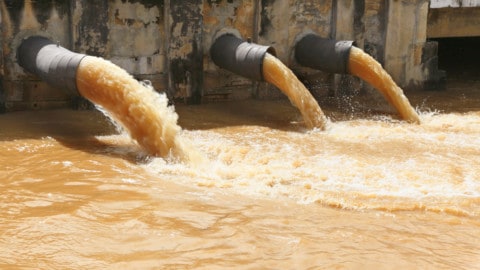![]() The Hydraulic Institute (HI) has updated the 1998 edition of the ANSI/HI standard on pump intake design and published ANSI/HI 9.8–2012 Rotodynamic Pumps for Pump Intake Design as well as has publishing ANSI/HI 9.6.1–2012 Rotodynamic Pumps Guideline for NPSH Margin
The Hydraulic Institute (HI) has updated the 1998 edition of the ANSI/HI standard on pump intake design and published ANSI/HI 9.8–2012 Rotodynamic Pumps for Pump Intake Design as well as has publishing ANSI/HI 9.6.1–2012 Rotodynamic Pumps Guideline for NPSH Margin
ANSI/HI 9.8–2012 Rotodynamic Pumps for Pump Intake Design was developed by experts in sump design, researchers specialized in fluid flow dynamics, and senior engineers representing pump manufacturers and the end user community, this standard enables designers, owners, and users to configure functional pumping facility designs and provides remedial measures for problem intakes.
The standard provides a flowchart to serve as a guide to the use of this standard and can be used to locate the appropriate section(s) in the standard.
The following types of intakes are included in this standard:
- Rectangular intakes
- Formed suction intakes
- Circular pump stations
- Trench-type intakes for clear liquids and for solids-bearing liquids
- Tanks – pump suction
- Can vertical turbine pump intakes
- Unconfined intakes
- Circular plan wet pit for solids-bearing liquids
Other topics of interest in this standard include:
- Physical model studies of intake structures and when they are necessary
- Inlet bell design
- Required submergence for minimizing surface vortices
- Computational fluid dynamics (CFD)
- Performance enhancements for trench-type wet wells
- Alternate formed suction intake designs
ANSI/HI 9.6.1–2012 Rotodynamic Pumps Guideline for NPSH Margin. guideline serves as a replacement for the 1998 edition, which was later withdrawn completely in 2003.
This guideline covers rotodynamic, general purpose pumps with power levels as high as 5300 hp and impeller tip speeds less than 130 feet per second and describes the benefits to pump longevity of maintaining suitable NPSH Margin. Pump users should be aware that “the full published pump head will not be achieved when the NPSH Available equals the NPSH3 of the pump. If the NPSH Available matches the NPSH3, the first-stage head will be 3{87a03eb4327cd2ba79570dbcca4066c6d479b8f7279bafdb318e7183d82771cf} less than the fully developed value. Today’s higher speed, higher energy density pumps might not achieve acceptable service life under suction conditions without an adequate NPSH Margin.
This document serves as a tutorial on the subject of NPSH as well as providing guidance for determining NPSH Margin. The following considerations are discussed relative to the sensitivity of a pump to NPSH-related problems:
- Impeller inlet tip speed
- Larger vs. smaller impeller eye diameter
- Suction specific speed
- Characteristics of the pumpage
- Operating range of the pump and proximity to POR and AOR
- Materials of construction and cavitation resistance
- Impeller vane overlap
- Pump size and relationship of size to cavitation damage
- Duty cycle – time of operation under cavitating condition
- Reduction of NPSHA with time
This excellent NPSH reference helps pump users understand why it is essential to specify an appropriate NSPH Margin and learn about the negative aspects of specifying an excessive NPSH Margin.
The updated standard is available for $225 and the updated guideline is available for $80 at the HI eStore and is available in both hardcopy and pdf formats.













